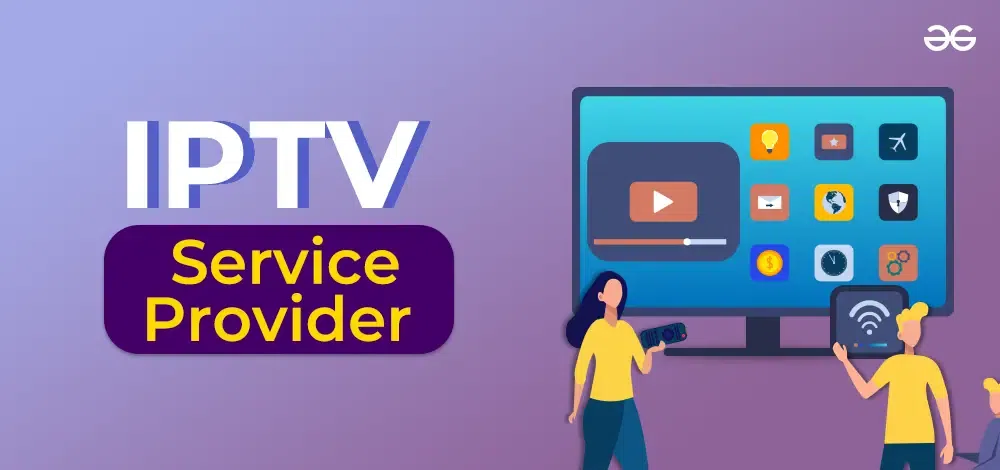Update Your Enjoyment: Budget Friendly IPTV Subscription Packages
Wiki Article
Just How IPTV Functions: A Step-by-Step Guide to Net Method Television Modern Technology
Net Protocol Television (IPTV) has actually changed the means we consume television web content, offering a new realm of opportunities with the power of the internet. Recognizing the complexities of just how IPTV works can drop light on the modern technology that drives this cutting-edge form of media distribution. From the basic concepts of IPTV to the intricate process of web content distribution, each step plays an essential role in ensuring a seamless watching experience. In this guide, we will discover the underlying devices that make IPTV an interesting combination of modern technology and home entertainment.IPTV Fundamentals
In comprehending IPTV essentials, it is critical to grasp the fundamental functions of this modern technology in providing television content over the web. IPTV, which means Web Method Tv, makes use of Web Procedure (IP) networks to transfer tv content to users' devices. Unlike conventional approaches of transmitting television web content through cable or satellite signals, IPTV streams media with high-speed net connections.
Furthermore, IPTV permits interactive capabilities, such as video clip on demand (VOD) and digital program guides (EPG), boosting the customer experience by providing even more control and flexibility in accessing web content. On the whole, understanding the fundamentals of IPTV sets the structure for discovering its advanced performances and the benefits it uses to modern-day tv intake.
Content Distribution Process
Efficient content delivery in IPTV systems involves a well-structured procedure that ensures smooth transmission of television material over IP networks. The material delivery process in IPTV starts with the development of the video clip web content, which is after that inscribed into electronic layout suitable for IP transmission. This inscribed material is then securely kept on servers recognized as media web servers. When an audience requests certain web content, the IPTV system obtains the asked for information from the media web servers and provides it to the visitor's gadget online.
Middleware Capability
With the combination of middleware, IPTV systems gain enhanced performance that enhances user interaction and web content administration. Middleware offers as an essential part that connects the space between the user interface and the back-end framework, helping with smooth communication and communication within the IPTV system. One of the crucial functions of middleware in IPTV is to allow individualized user experiences by giving features such as interactive program overviews, video-on-demand services, interactive advertising, and user preferences administration. By centralizing these functionalities with middleware, service he said suppliers can provide a much more dynamic and customized IPTV experience to their clients.
Device Compatibility
Provided the pivotal role of middleware in enabling seamless interaction and content management in IPTV systems, a critical facet to consider is the compatibility of tools made use of for accessing the IPTV services. Device compatibility is necessary for guaranteeing a smooth customer experience and optimum efficiency when accessing IPTV material.In the context of IPTV, device compatibility describes the capacity of a tool to properly connect with the IPTV service, display material properly, and support the needed protocols and codecs for streaming video clip content online. Various tools, such as wise Televisions, set-top boxes, smart devices, tablets, and computer systems, may have differing degrees of compatibility with IPTV services.
To make certain a smooth watching experience, it is essential for individuals to choose tools that work with the particular IPTV service they are making use of. Furthermore, IPTV solution suppliers need to use assistance for a vast array of devices to cater to the varied needs of their individual base. By prioritizing tool compatibility, both users and provider can improve the total IPTV experience.
High Quality of Service (QoS)
Taking into consideration the crucial duty of keeping a high criterion of efficiency and dependability in IPTV systems, making certain consistent Quality of Service (QoS) continues to be an essential element of the user experience. QoS in IPTV describes the capacity of the system to provide material with minimal disturbances, high resolution, and quick filling times. To accomplish optimum QoS, various variables require to be dealt with. Network data transfer is important to sustain top notch video streaming without buffering or pixelation. Furthermore, latency, jitter, and packet loss must be minimized to enhance the seeing experience.Provider utilize QoS mechanisms such as website traffic prioritization, buffering, and mistake modification to preserve a secure IPTV solution. By focusing on IPTV website traffic over much less time-sensitive data, suppliers can make certain smooth playback even during top usage hours. Buffering helps compensate for network changes, while error modification strategies enhance data stability.
Continuous monitoring and optimization of QoS parameters are necessary to adjust to transforming network conditions and individual demands. Ultimately, a durable QoS structure is crucial for supplying a smooth and enjoyable IPTV experience to users.
Conclusion
To conclude, IPTV runs via the transmission of tv web content over web protocol networks. The technology entails a systematic process of web content delivery, assisted in by middleware functionality to ensure compatibility across numerous devices. High quality of Solution plays a critical Source role in keeping the efficiency and dependability of IPTV services. Recognizing the basic principles of IPTV is crucial for comprehending the ins and outs of this cutting-edge tv modern technology.Report this wiki page